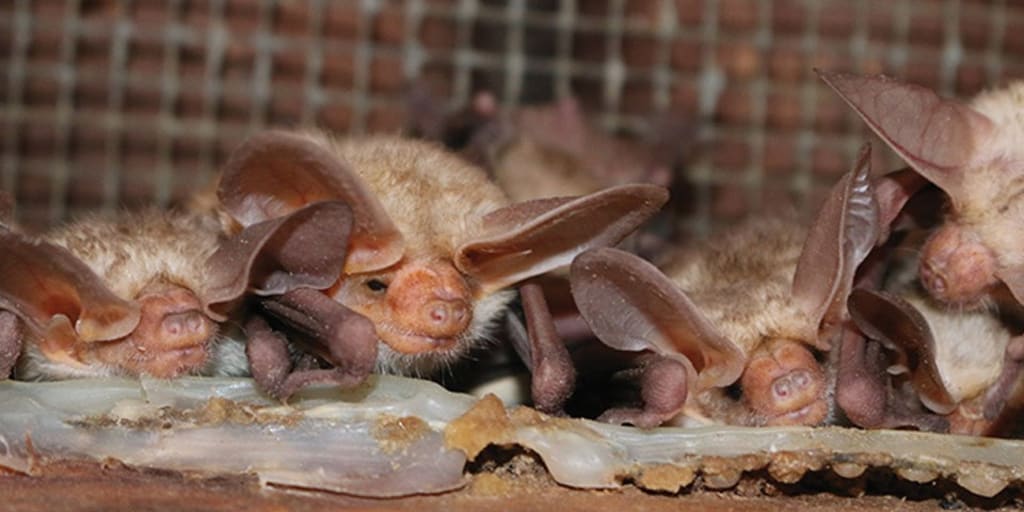How Bats carry deadly diseases without dying
Find out how bats carry deadly diseases without dying here!

I must admit, I find bats to be quite peculiar. However, my fascination with them is rather endearing. I genuinely appreciate these fluffy, flying mammals and all that they bring to the table, much like tequila. Not only do they play a crucial role in pollinating the agave plant, but they also possess unique abilities that allow them to thrive amidst deadly diseases such as Ebola, COVID-19, and the recent Nipah virus outbreaks in India. Despite bats often being blamed for these outbreaks, we have yet to discover caves filled with bats that have succumbed to these diseases. This is because bats not only serve as hosts for such viruses but also possess a remarkable tolerance towards them.
Researchers believe that their ability to fly has co-evolved with their immune systems and physiology, resulting in a number of distinctive features. Flight demands an immense amount of energy, causing a bat's basal metabolic rate to increase up to 15 times. To put it into perspective, a human running at full speed only doubles their metabolic rate, while a rodent may elevate it sevenfold. Therefore, the energetic expenditure of flying surpasses that of any form of terrestrial locomotion.
Additionally, a bat's heart rate can soar to over a thousand beats per minute during flight, which is approximately four to five times higher than its resting heart rate. Furthermore, when in flight, bats raise their body temperature to a staggering 44 degrees centigrade, just shy of the lethal limit for mammals, which is 45 degrees centigrade. It is truly remarkable that bats do not succumb to these extreme physiological demands while in flight. Now, you may be wondering, what does all of this have to do with viruses? Well, allow me to explain. Flight is a significant stressor that resembles the aging process, and it is an inherent part of bats' physiology.
This constant stress on their bodies has led bats to develop unique adaptations to cope with the physiological demands of flight, including their immune systems. Bats have a highly efficient immune response that allows them to quickly and effectively fight off infections. Their immune systems are constantly active, even when they are not sick, which helps them to rapidly respond to any potential threats.
One of the key components of bats' immune systems is their ability to produce a large number of antiviral proteins called interferons. Interferons play a crucial role in the early stages of viral infection by inhibiting the replication of the virus and alerting other immune cells to the presence of the virus. Bats have been found to have a higher baseline level of interferons compared to other mammals, which may contribute to their ability to tolerate viral infections without becoming severely ill.
In addition to their robust immune response, bats also have unique genetic adaptations that allow them to coexist with viruses. Researchers have discovered that bats have a higher number of genes associated with DNA repair and cell cycle regulation, which helps to prevent the accumulation of DNA damage that can lead to cancer and other diseases. This may explain why bats have a lower incidence of cancer compared to other mammals.
Furthermore, bats have a unique ability to suppress inflammation, which is a key component of the immune response. Inflammation is a double-edged sword - while it is necessary to fight off infections, excessive inflammation can also cause tissue damage and contribute to the severity of diseases. Bats have evolved mechanisms to dampen inflammation, allowing them to control the immune response and prevent excessive tissue damage.
All of these adaptations and unique features of bats' physiology contribute to their remarkable ability to tolerate and coexist with viruses. While bats may serve as hosts for a wide range of viruses, they have developed a delicate balance between viral replication and immune control, which allows them to avoid severe disease. Understanding the mechanisms behind bats' tolerance to viruses could potentially lead to the development of new treatments and therapies for human diseases.
In conclusion, bats are truly fascinating creatures with remarkable abilities and adaptations. Their ability to fly has co-evolved with their immune systems, resulting in unique features that allow them to thrive amidst deadly diseases. By studying bats and their interactions with viruses, researchers can gain valuable insights into the immune response and potentially discover new ways to combat viral infections in humans. So, the next time you see a bat, remember to appreciate their incredible resilience and the important role they play in our ecosystem.
About the Creator
Enjoyed the story? Support the Creator.
Subscribe for free to receive all their stories in your feed. You could also pledge your support or give them a one-off tip, letting them know you appreciate their work.





Comments
There are no comments for this story
Be the first to respond and start the conversation.